比尔盖茨:为什么基因编辑和人工智能一样值得关注?
比尔盖茨微博发布,其乐观地相信,基因编辑可以成为治疗和治愈疾病的重要工具。比尔盖茨最近写了一篇文章,关于基因编辑后的蚊子能如何帮助我们消灭疟疾及其他蚊媒疾病。
下面是文章内容:
基因编辑可以成为对抗这一疾病的有力新武器。
人类数千年来都在发明杀死蚊子的新方法。罗马人通过清排沼泽地来灭蚊。如今,你可能会在院子里安置一个捕虫器。在中低收入国家,你经常可以看到人们喷洒杀虫剂,或者设置用糖作诱饵的粘性陷阱。
然而进化相当聪明。它通过诞生出更难被杀死的蚊子,始终跑在我们的前面。在撒哈拉以南非洲、南美部分地区和东南亚,我们看到了数量惊人的能够抵抗杀虫剂的蚊子。
这尤其给防治疟疾等蚊媒疾病带来了麻烦。为了根除这些疾病,我们需要新的工具与已有的工具进行互补。
我们的基金会正在支持许多不同的尝试。其中一个项目令我格外的兴奋,那是一组对蚊子进行基因改造的技术,可以显著减少某些地区携带疾病的蚊虫数量。
这些基因技术最酷的地方在于它们的精确程度。精确与否至关重要,因为在3000多种蚊子里,造成绝大多数疟疾病例的只是其中的五种。并且在这些蚊子中,只有雌蚊会传播疾病,因为它们是唯一会咬人的(当它们需要额外的蛋白质来繁殖时,它们就会这样做。专家称之为“吃一顿血液餐”)。而雄蚊只喝花蜜。
基因编辑带给我们的希望是,我们可以只在特定区域消灭具有危险性的蚊子,而不是随意地杀死蚊子。这将为我们赢得治疗当地所有疟疾患者的时间,然后在无寄生虫的条件下恢复蚊子的种群数量。
一种令人兴奋的基因编辑技术被称为基因驱动(Gene Drive)。这一术语包含几种不同的方式,但其基本原理是使用CRISPR 技术来重写遗传规则。通常情况下,对于任何一个基因,父母中的一方有50% 的几率将该基因遗传给孩子(它会与双亲中另一位的基因竞争,且只有一个能够胜出)。利用基因驱动技术,这一概率可以达到100% 。你将一个编辑过的基因带给一些蚊子,这个基因将植入——或驱动——它们所有的后代。当这些蚊子与野生蚊子交配时,它们所有的后代都将携带编辑过的基因,并且随着时间的推移,该基因会穿透整个种群。
想象一下,不管伴侣的眼睛是什么颜色,蓝眼睛的蚊子都会有蓝眼睛的后代。最终,这个种群中的每一只蚊子都将有蓝色的眼睛。
下面这张图向你展示了基因驱动是如何最终将某个基因扩散到整个种群的:
我们没理由认为可以将基因驱动应用在人类身上,更不用说提倡这样做了。关于这项技术在昆虫身上的应用也存在着一些严重的问题,我稍后会谈到这个问题。但首先我想给你们举两个例子来说明它是如何起作用的。
其中一个是名字花哨的X-shredder。或许你能回忆起生物课讲过的一些内容,一只蚊子是雌是雄,部分取决于它从父母那里继承到了什么性染色体。雌蚊从双亲分别得到一条X染色体,而雄蚊则从母亲那里得到一条X染色体,从父亲那里得到一条Y染色体。
2014年,伦敦帝国理工学院和西雅图弗雷德 · 哈钦森中心的科学家们得以编辑雄性蚊子体内的一种蛋白质,从而破坏其精子中的X染色体。于是大部分雄性蚊子将Y染色体传递给后代,所以它们后代中的大部分也将是雄性。在基因驱动的作用下,这些后代也将携带编辑过的蛋白质,所以它们后代中的大多数也将是雄性。
不出几代,雌雄比例将会失衡,最终导致该物种在这一地区灭绝。
另一个例子涉及到双性基因(Doublesex Gene)。这种基因在蚊子体内与性染色体一起发生作用,决定后代是雄性还是雌性。去年,伦敦帝国理工学院的研究人员发现,携带经过编辑的双性基因的雌蚊会长出雌雄混搭的器官,包括雄性生殖器和一个脆弱到无法刺透人类皮肤的喙。它们不能繁殖,所以种群数量会减少;它们不能吸食血液,所以它们不会传播寄生虫。
双性基因编辑不会影响雄蚊,虽然在基因驱动的作用下,它们会将基因传递给后代,使得双性基因编辑能在种群中持续传播。
我们知道基因驱动技术在实验室条件下可行。当帝国理工学院的研究人员把150只携带双性基因编辑副本的雄蚊同450只野生蚊子放进一个小笼子里时,所有蚊子在几个月内(大约10代)就都死光了。基于性别差异的编辑也产生了类似的结果。
下一步是在更大的笼子里进行试验,并最终获得政府的许可在户外进行试验。我们还需要了解几件事情:如果某种蚊子开始死亡,这对食物链有什么影响?我们需要引进多少变异的蚊子?我们需要蚊子消失多长时间?去年,布基纳法索政府许可在野外释放不育的、非基因驱动的蚊子,这科研人员便可以开始研究一些上述的问题。
正如我所提到的,社会问题和监管问题也会产生影响。例如,由于蚊子不会受国界的限制,这就需要邻国在对待基因编辑技术的使用上具有一致意见。政策制定者和科学家们一直在像世界卫生组织和非盟发展机构的平台上就这些问题进行辩论,并正朝着一个共识迈进。
我认为我们可以在2024年前获得监管部门的批准,并在2026年前让第一批基因驱动的蚊子整装待发。虽然这项技术永远不会取代其他已有的抗疟工具,但我乐观地认为,它可以成为一个更重要的武器来消灭疟疾。
Test-tube mosquitoes might help us beat malaria
Humans have spent thousands of years inventing new ways to kill mosquitoes. The Romans did it by draining swamps. Today you might have a bug zapper in your back yard. In low- and middle-income countries, it’s common to see people spraying insecticides or setting up sticky traps baited with sugar.
But evolution is smart. It is one-upping us by creating mosquitoes that are harder to kill. In sub-Saharan Africa and parts of South America and southeast Asia, we are seeing an alarming number of mosquitoes that can withstand insecticides.
This is especially problematic for the fight against mosquito-borne diseases like malaria. To eradicate these diseases, we need new tools to complement the ones we already have.
Our foundation is backing a lot of different advances. One that I’m especially excited about is a set of techniques for genetically modifying mosquitoes that could dramatically reduce the number of disease-carrying insects in certain areas.
What is cool about these genetic techniques is how precise they can be. Precision matters because out of more than 3,000 species of mosquitoes, only five are responsible for causing most cases of malaria. Of those, only females spread the disease, because they’re the only ones that bite humans. (They do it when they need extra protein for reproduction. Experts call it “taking a blood meal.”) The males just drink nectar.
The promise of gene editing is that, instead of killing a bunch of mosquitoes indiscriminately, we could eliminate only the dangerous ones in a particular area. That would buy us time to cure all the people there of malaria. Then we could let the mosquito population return without the parasite.
One exciting gene-editing technique is called gene drive. The term covers several different approaches, but the basic idea is to use the CRISPR method to rewrite the rules of inheritance. Normally, for any given gene, there’s a 50 percent chance that a parent with that gene will pass it on to a child. (It is competing with one from the other parent, and only one of the two can win.) With gene drive, the odds go up to 100 percent. You give a few mosquitoes an edited gene that inserts—or drives—itself into all their offspring. When those mosquitoes mate with wild mosquitoes, all their children will have the edited gene, and over time it will make its way through the entire population.
Imagine if blue-eyed mosquitoes had only blue-eyed children, no matter what color their partners’ eyes were. Eventually, every mosquito in that population would have blue eyes.
This chart shows you how gene drive eventually spreads a gene throughout an entire population:
There’s no reason to think gene drive is even feasible in humans, let alone advisable. There are also serious questions surrounding the use of this technology on insects, which I will get to in a moment. But first I want to give you two examples of how it works.
One is the colorfully named X-shredder. As you might remember from biology class, the sex of a mosquito is determined partly by the sex chromosomes it inherits from its parents. Females got one X chromosome from each parent; males got an X from their mother and a Y from their father.
In 2014, scientists at Imperial College London and the Fred Hutchinson center here in Seattle were able to edit a protein in male mosquitoes so that it shreds the X chromosomes in their sperm. As a result, the males pass along mostly Y chromosomes, so most of their offspring will be males. Thanks to gene drive, those offspring will also have the edited protein, so most of their children will be males.
Within a few generations, the male/female ratio gets out of whack, and eventually the species dies off in that area.
Another example involves the doublesex gene, which in mosquitoes works along with the sex chromosome to determine whether an insect turns out male or female. Last year, researchers at Imperial College London found that females with edited doublesex genes develop a mix of male and female organs, including male genitalia and a proboscis that is too flimsy to break human skin. They can’t reproduce, so the population shrinks; and they can’t take a blood meal, so they won’t spread the parasite.
The doublesex edit doesn’t affect males, although thanks to gene drive, they will pass it to their offspring, which is how it keeps spreading through the population.
We know gene-drive technology works in the lab. When the Imperial College researchers put 150 males carrying a copy of the doublesex edit in a small cage with 450 wild-type mosquitoes, the population died off within a few months (about 10 generations). The sex bias edit produced similar results.
The next step is to run tests in larger cages and, eventually, get permission from governments to do them outdoors. We need to understand things like: What’s the impact on the food chain if a certain species of mosquito starts dying off? How many altered insects would we need to introduce? How long do we need the mosquitoes to be gone? Last year, the government of Burkina-Faso agreed to allow the release of sterile, non-gene-drive mosquitoes in the wild so researchers could begin to study some of these questions.
As I mentioned, social and regulatory issues also come into play. For example, because mosquitoes don’t exactly respect national boundaries, neighboring countries will probably need to agree on the rules surrounding the use of gene-editing technology. Policymakers and scientists have been debating these questions in forums like the World Health Organization and the African Union’s development agency, and they are moving toward a consensus.
I think we can have the regulatory approvals in place by 2024 and the first gene-drive mosquitoes ready for use by 2026. Although this technique will never replace the other tools we have for fighting malaria, I’m optimistic that it could become one more important weapon in eradicating the disease.
广告声明:文内含有的对外跳转链接(包括不限于超链接、二维码、口令等形式),用于传递更多信息,节省甄选时间,结果仅供参考,IT之家所有文章均包含本声明。








